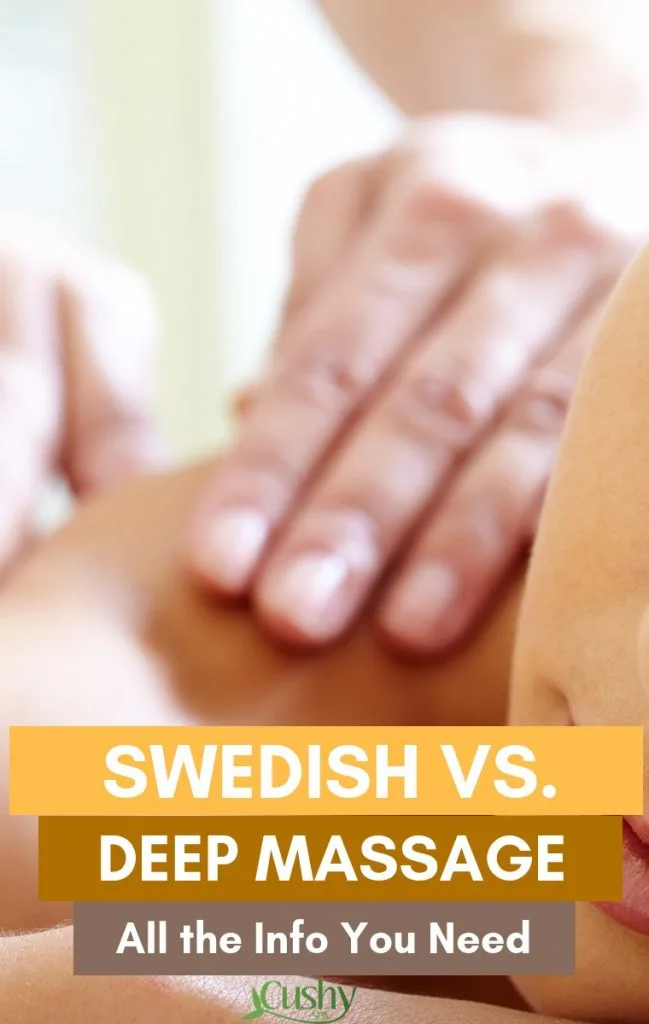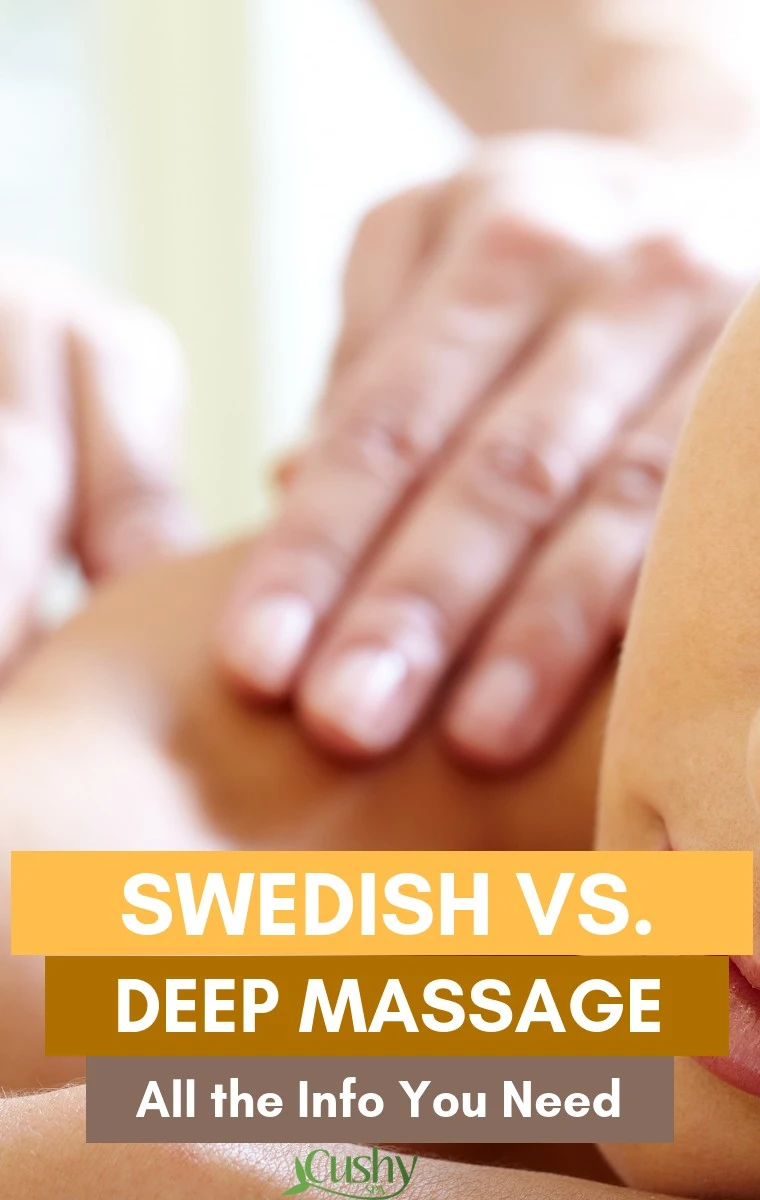
A few of my friends are new to massage therapy and hardly know much about it. To them, massage is basically just rubbing any oil and kneading the body. However, massaging isn’t just that and I think most of you understand it.
This blog is supported by readers purchasing featured products. When you buy products with my links, I earn a commission at no extra cost to you. Here is my full affiliate disclosure.
Thus, if you’re just starting out, reading all about it is a good way to begin. Here are a few quick details: all types of massages can be categorized into these groups: Acupressure, Swedish massage, and Deep Tissue massage. In this article, you’ll mostly learn about Swedish and Deep Tissue massage.
It might be hard to choose between these two. Therefore, it’s probably going to be useful to learn more about each of them and understand what these massages are for. That being said, let’s get to the point.
Swedish Massage
Swedish Massage is the foundation of most Western massages since they are just variations of the basic Swedish massage. The massage is meant to relax muscles by applying warm oil and using warm hands to massage the body.
The typical Swedish massage techniques include long gliding strokes, friction, lifting and tapping movements on the soft body tissue. The aim is, like behind most of the massages, to boost blood circulation and relax your body.
Studies show that Swedish massage therapy reduces blood pressure, heart rate, and inflammation. Additionally, Swedish massage targets lymph vessels and lymph nodes. Therefore, it helps with detoxification too.
If you cannot afford a proper massage, buying a massage cushion or the best back massager might be helpful!
Origin and History
While it might be obvious that Swedish massage originated from Sweden, it’s not actually the truth. In fact, the Swedish massage was called that way by Johan Georg Mezger, a Dutch practitioner, who did massages himself (source).
Swedish massage is so common and popular in Europe that it’s simply called a ‘classic’ massage. The offshoots of Swedish massage include medical massage, body wraps, hydrotherapy, manual lymphatic drainage, Esalen massage, pregnancy massage, chair massage, geriatric massage, sports massage, and massage for children and infants.
Swedish Massage Techniques
The techniques associated with Swedish massage are as follows:
1. Effleurage Strokes
These are long and flowing strokes that not only help the masseuse to spread the oil or lubricant all over the body but also assess muscle toning.
2. Petrissage
Those are massage movements that involve kneading, lifting, skin rolling and squeezing. The technique aids in flushing out the metabolic toxins.
3. Friction
Frictional strokes are short but fast movements that lead to heat generation. It loosens up the ligaments and directs blood flow to that area.
4. Tapotement
It’s a rhythmic percussion. You may be familiar with this technique because almost all cartoons or pop culture depictions showcase it.
Remember the strokes that look like karate chops? Yes, that’s a tapotement massage technique. It releases lymphatic build-up and pleasantly stimulates the nervous system.
5. Vibration
The technique uses the heel of the hand to stroke and shake the surface of the body. It creates quite a pleasant feeling and increases blood circulation. It’s very often used on sportsmen before important competitions.
Swedish Massage Benefits
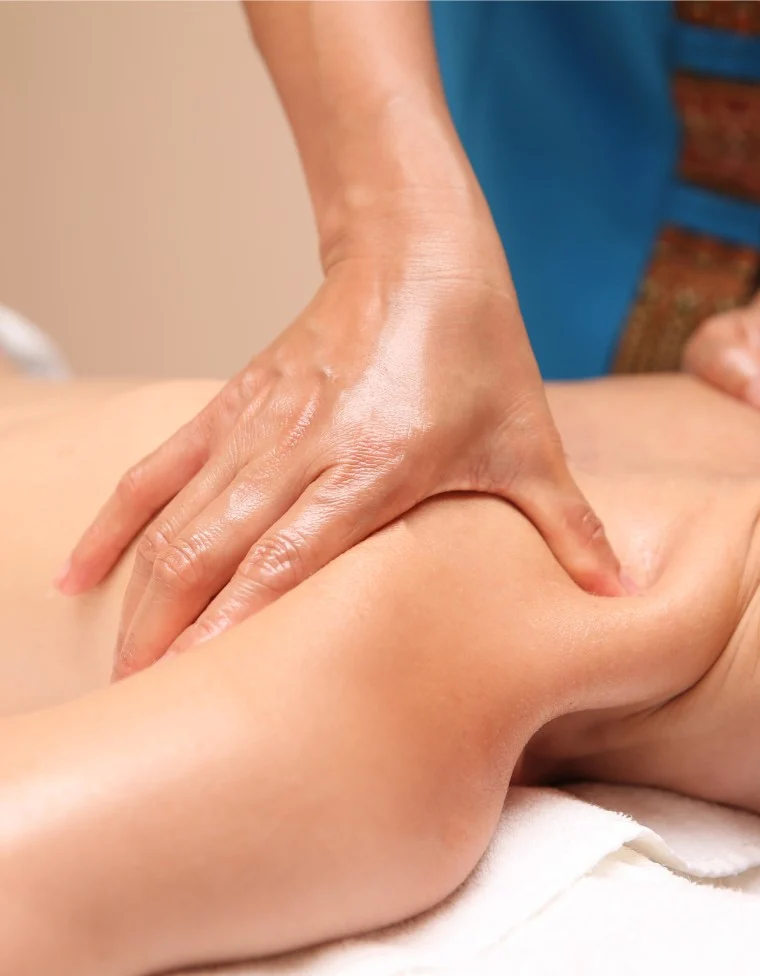
Full body massage benefits can be seen in both short and long-term. However, the best results can be achieved when it’s done regularly.
1. Increases Blood Circulation
Since the effleurage techniques follow the motion of the circulatory system, it increases the blood flow. Also, application of warm essential oils helps with generating more heat.
That helps with blood circulation too since your body naturally tries to cool down your muscles and skin. It does it by pumping more blood into the warm areas.
2. Lowers Blood Pressure
The long strokes used in Swedish massage are directed towards the heart, influencing both lymph and blood. That helps with both the removal of metabolic waste and lowering blood pressure.
3. Improves Immunity
According to a study conducted by Emory University in March 2015, a direct correlation between the decrease in fatigue was found when cancer patients were subjected to Swedish massage. That decrease in fatigue improved the immunity in cancer patients.
4. Relaxes and De-Stresses Your Body
Like any effect of a good massage, the primary goal is to de-stress and relax. The movements and motions used in Swedish massage have the capacity to bring inner peace. And who doesn’t want that?
5. Decreases Anxiety
The same study also suggests that this massage can reduce anxiety. A similar study conducted in 2014 by the University of Miami Medical School shows that experiencing a Swedish massage decreases anxiety, depression, and enhances social interaction and self-esteem. It also promotes body positivity.
6. Boosts Mood
While Swedish massage helps with reducing anxiety, essential oils can boost your mood, relax your body and energize it. So, the usage of these oils is definitely recommended.
7. Relieves Pain
Swedish massage does help with pain reduction. Although, it’s best to consult a professional on that. Even those suffering from chronic diseases like arthritis and multiple sclerosis can find some relief through regular Swedish massages.
8. Reduces Constipation
Abdominal muscles can be warmed up by regular massages and encouraged a little bit. Thus, a Swedish massage could actually reduce constipation and calm down an upset stomach!
Deep Tissue Massage
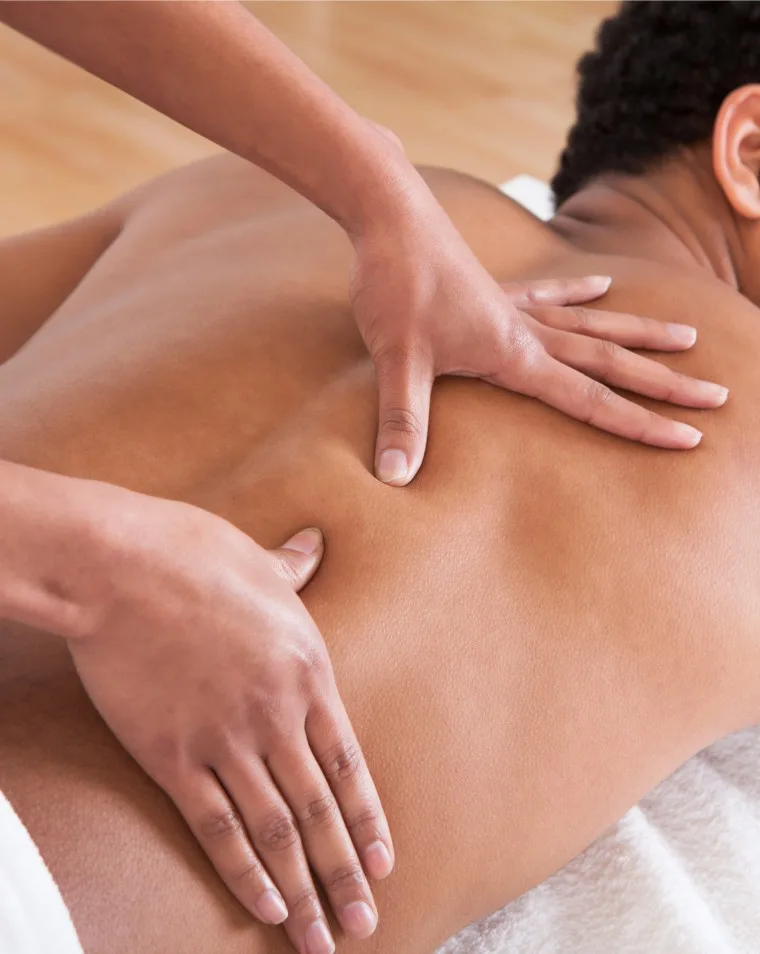
This massage is also not as simple as the name suggests. You might think that Deep Tissue massage involves heavy pressure, but that’s not always how it goes. Deep muscles can be relaxed even with light pressure but precise skills are required.
Basically, the massage aims at the problems in the deep tissue areas and that’s how the name came around. Unlike regular massages or Swedish massage, Deep Tissue massages are more specific in nature. They deal with distorted body areas and are useful in loosening up tight muscles.
That helps with the correction of the posture and alleviation of acute or chronic inflammation. Deep tissue massage acts from layer to layer through the connective tissues, down the muscles, right to the chronic muscle contracture and fascial adhesions (source).
Origin and History
Deep Tissue massage has been practiced for centuries. The earliest traces of it date back to the civilizations of the Far-East, Greece, and Egypt (source). The techniques involved in the massage were developed in the 1800s by Canadian physicians.
By 1949, Canadian doctor Therese Pfrimmer further developed it and formulated the guidelines in her book “Muscle – Your Invisible Bonds”. An interesting fact!
Therese attempted to massaging deep tissues to cure the paralysis of her legs. In just a matter of 3 months, she was able to reverse the effects of it! She then went on to establish a ‘Deep Tissue Therapy Clinic.’
Deep Tissue Massage Techniques
Deep Tissue massage involves the movement of fingers, elbows, hands, and other massage accessories. All that to apply pressure and build friction.
Once again, don’t forget, if you cannot afford a massage, you can always buy a neck massager or a percussion massager.
1. Linear Friction
This is the primary stroke used with deep tissue massage. It’s a sustained linear stroke of the fascia that surrounds, supports, and penetrate all the bones, organs, muscles, and nerves (source).
The stroke follows a certain direction to address a specific muscle. It activates the stretch receptors and causes the relaxation of the muscle. The whole process is also called a stretch reflex (source).
2. Static Pressure
Applying direct static pressure is also a technique. This pressure releases the muscle or a group of muscles tension.
Deep Tissue Massage Benefits
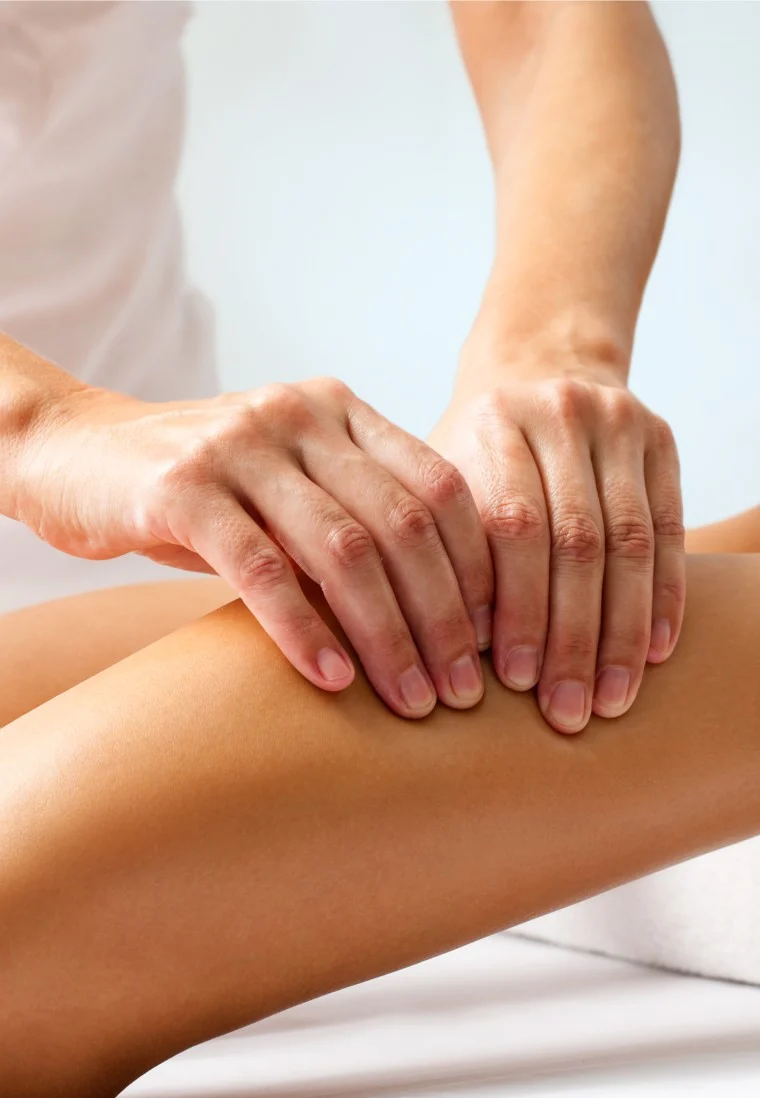
Here are some of the benefits that a deep tissue massage can offer. Some of them are obvious, others – not so much.
1. Relieves Chronic Inflammation and Pain
The primary goal of a deep tissue massage is to reduce pain and discomfort. A study showed that deep tissue massage was more effective in relieving chronic low back pain than a therapeutic massage.
In fact, another study showed that this massage as effective in reducing pain as NSAID!
2. Lowers Blood Pressure
A study showed that deep tissue massage has a positive effect on the systolic, diastolic and the mean arterial blood pressure. Thus, this massage can be definitely used if you suffer from high blood pressure.
3. Reduces Stress and Anxiety Caused by Chronic Illnesses
Long recovery times can make you stressed and anxious, and cause depression. It may even further affect your general well-being. Deep tissue massage lowers cortisol levels and boosts production of oxytocin. These reduce stress and so relax muscle tension (source).
4. Speeds Up Recovery from Sports Injuries
If you’re an athlete, you’ve probably had a deep tissue massage before. The Journal of Sports Medicine and Physical Fitness published a report on deep tissue massage, otherwise known as ‘sports massage’. It suggests that the massage prevents injuries and helps with faster recovery.
5. Improves and Corrects Posture
After all the pressure and the lengthening of the fascia, strengthening the opposing muscles can help to align a correct posture. Bad posture is more like a habit that needs to be broken and before doing that, you have to relax those muscles. That’s exactly what deep tissue massage does.
6. Improves General Health
Just the idea that your chronic pain can be a thing of past is enough to make one feel mentally and psychologically fit. Deep tissue massage helps with the alleviation of pain and therefore improves general health too.
7. Breaks Down Scar Tissues
If you have recently injured your soft tissue, then deep tissue massage can help even with that since it breaks down scar tissues. They generally hamper the recovery by causing stiffness. Therefore, the breakdown of the scar tissue will allow richer blood flow to affected areas aiding a quick recovery.
8. Can Assist With Labour Pain and Delivery
Giving birth is usually very painful. Yet, it can be easier with the help of deep tissue massage. The hormonal rush that takes place after the massage is also helpful in reducing anxiety.
Read More: How to Give a Neck Massage for Someone You Love
Swedish vs Deep Tissue Massage – Which One is For You?
Here is what you need to consider when choosing the right massage for you.
When to Choose Swedish Massage
Swedish massage has greater popularity due to its therapeutic effect. It provides you with holistic health benefits. Due to the inclusion of essential oils in the Swedish massage, they are not only beneficial for stiffness, pains, and muscle ache. They’ll also de-stress you and boost your immunity!
Thus, if you are looking for a more general massage where you can relax and have a good time, then the Swedish massage is the way to go. You can get one at the spa or get someone close to do it for you.
My recommendation: do make use of essential oils to make the session even more enjoyable.
When to Choose Deep Tissue Massage
But, if you suffer from chronic pain or have recently gotten a whiplash or sports injury, then you should opt for a deep tissue massage. It mainly focuses on muscle rehabilitation and works well with short-term therapy.
I tried deep tissue massage for the first time when I had sprained my back. Nothing could replace the feeling of relief.
But remember: only an experienced and qualified practitioner can offer the right kind of deep tissue massage. These are slower and longer and are targeted at specific areas of the body.
A poorly trained professional may make it worse rather than better. However, do consult your physician before you set out for such a massage adventure.
Conclusion
As you can see when it comes to comparing Swedish vs deep tissue massage, it’s quite simple. Swedish massage is more for relaxation while deep tissue massage mainly focuses on relieving the pain.
Now based on this information, you can easily make a balanced decision as to which massage would be ideal for you. It also might be a good idea to consult your doctor if your condition is serious.
